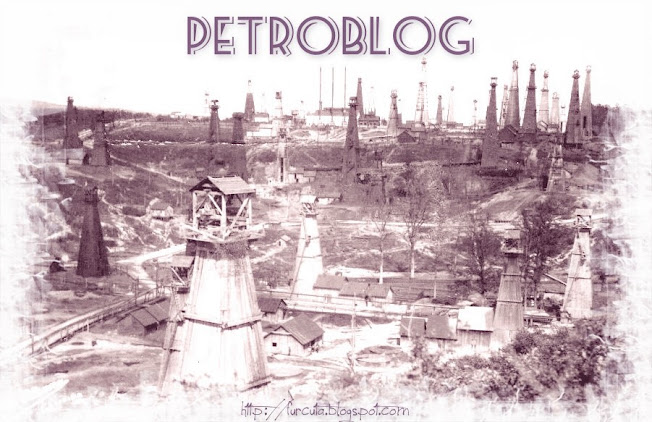Moreni, Roumanie, 1937.
When oil wells burn
Fire that lasted seventeen months
A handle is pressed and the charge goes up. The flame suddenly increases. The roar which has been so great that those near have to stuff their ears, becomes even louder. Then suddenly it stops. The flame disappears and there is simply a spout of oil. Over the hot ground men wearing special boots to prevent their feet being burned by the hot ground rush with a huge metal cap that has been kept ready. It is placed over the well, if they are lucky, before the oil ignites again. The oil is tamed, but weeks of work often remain, before the well is brought under full control and the danger of a new fire in the oil-soaked ground is past. Sometimes the process has to be carried out several times as the fire breaks out anew. Sometimes the fire fighters are unlucky - there are few blazes that have not cost lives. The great Rumanian fire killed nine men. But always there are the oil well fire specialists ready to tackle a blaze, however dangerous the task may seem. Myron Kinley, already mentioned, has tackled over one hundred fires in different parts of the world. The tunnelling method has the disadvantage that it takes a very long time to drive the tunnel, during which thousands of barrels of oil are being wasted, and that the tunnel is liable to collapse with the heat as it nears the fire. Then the oil seeps through and the fire increases in size. This explains the huge crater of the Moreni fire, which had been tackled in this way first. Among other methods that are tried with oil fires are bringing up high pressure boilers and spraying steam on to it, and of snuffing out the flame with a huge snuffer swung over it on a cable between two derricks. Every oil well fire needs individual treatment. Putting out these fires is a profit able job - if you survive. Tex Thornton was reported to have received £3,000 for blowing out an oil well fire in the U.S.A. He crawled to the top of the crater and threw bombs down it until the blasted earth put out the fires. £3,000 is of course, a small sum compared with that lost through the burning of the oil. The flame of a burning, oil well is unmistakable, especially at night, when it may be visible at a distance of a hundred miles. The flame at its base is colorless, but the top is an orange plume which often appears to flicker. This is due to the dense clouds of black smoke generated."
By David Johnston
Adelaide Chronicle. Thursday 10 April 1941
Labels
160RA,
eruption,
fire,
moreni,
Myron Kinley,
oil firefighters,
romana-americana,
tuicani,
wells
Subscribe to:
Comments (Atom)





